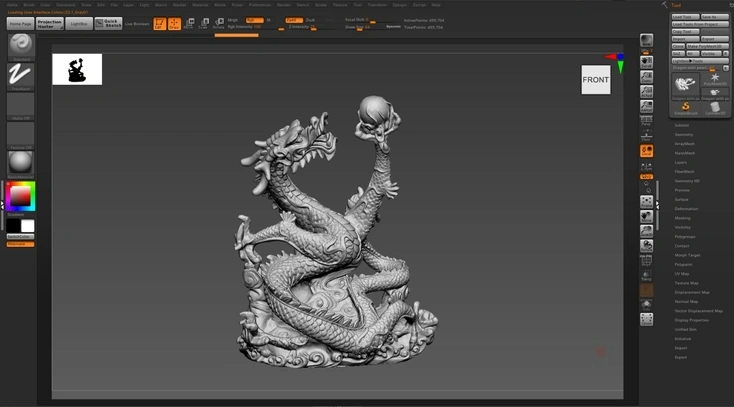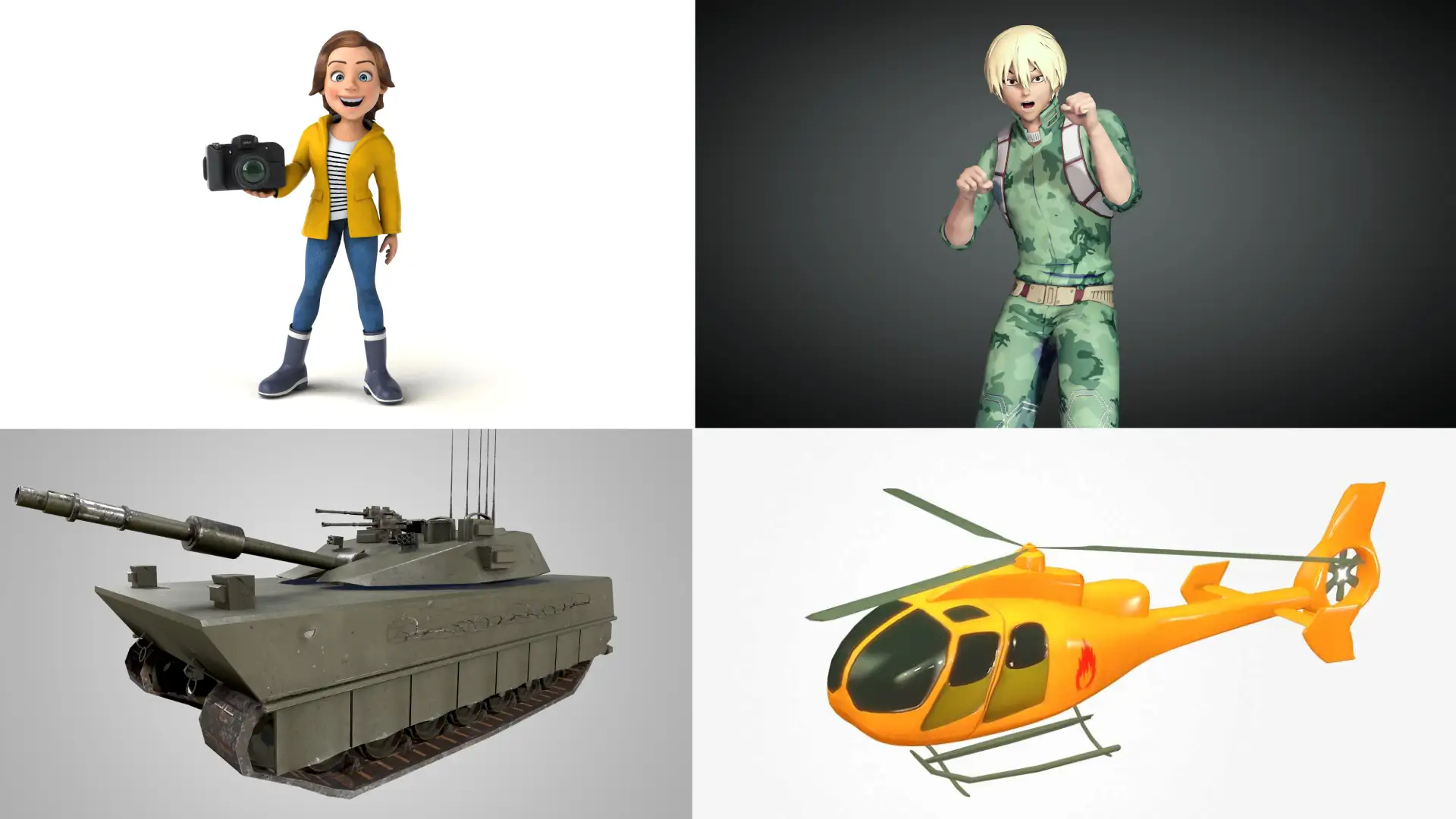The Economics of 3D Models: Cost-Benefit Analysis for Game Studios
by Animatics Asset Store in Blog on May 22, 2024Game studios face many challenges in producing high-quality games, not the least of which is managing the cost and complexity of creating 3D models. This article explores the economics of 3D models for game studios, providing a detailed cost-benefit analysis to help developers make informed decisions. By understanding the financial and practical implications of 3D modeling, studios can optimize their production pipelines and maximize their returns.
The Importance of 3D Models in Game Development
3D models are essential components of modern game development. These assets, created using advanced 3D modeling software, bring characters, environments, and objects to life. They are the foundation of virtual environments, enabling players to immerse themselves in interactive and visually appealing worlds.
Key Components of 3D Modeling
To fully appreciate the economics of 3D models for game studios, it is important to understand the key components involved:
- Character Modeling: This involves creating detailed 3D representations of characters, complete with texturing, rigging, and animation.
- Environment Modeling: This includes the creation of virtual landscapes, buildings, and other environmental elements.
- Asset Creation: This refers to the development of various in-game objects, from weapons to furniture, which enhance the game’s realism.
Each of these components requires specialized skills and tools, contributing to the overall cost and complexity of game development.
Cost Factors in 3D Model Production
The production of 3D models involves several cost factors that game studios must consider. These include software licenses, labor costs, and hardware requirements. Understanding these costs is crucial for effective budget management.
Software and Tools
Investing in high-quality 3D modeling software is essential for producing professional-grade models. Popular tools such as Autodesk Maya, Blender, and ZBrush offer a range of features but come with varying price tags. Additionally, game engines like Unreal Engine and Unity are required for real-time rendering and animation.
- Autodesk Maya: Maya is known for its powerful features and industry-standard status, but comes with a high license fee.
- Blender: A free, open-source alternative that is gaining popularity due to its robust capabilities.
- ZBrush: Ideal for digital sculpting, essential for high-detail character and environment modeling.
Labor Costs
Labor costs represent a significant portion of the expenses in 3D model production. Skilled 3D artists, animators, and technical directors are required to create and integrate these models into the game. The demand for experienced professionals can drive up costs, especially for complex projects requiring high-poly models and intricate animations.
Hardware Requirements
Producing high-quality 3D models necessitates powerful hardware capable of handling intensive computations. Game studios need to invest in high-performance computers, graphic cards, and storage solutions to ensure smooth production workflows and real-time rendering.
Benefits of Investing in 3D Models
Despite the substantial costs, investing in 3D models offers numerous benefits that can justify the expenses. High-quality 3D models enhance the gaming experience, attract players, and increase revenue potential.
Enhanced Player Experience
Well-crafted 3D models contribute to the visual appeal and immersion of a game. Detailed character models, realistic environments, and smooth animations create a more engaging and enjoyable experience for players. This, in turn, can lead to higher player retention rates and positive reviews.
Competitive Advantage
In the highly competitive gaming industry, having top-notch 3D models can set a game apart from its competitors. High-quality visuals are often a key selling point and can be a deciding factor for players choosing between different games.
Increased Revenue Potential
Games with impressive 3D models are more likely to attract attention and generate buzz. This can lead to increased sales, higher in-game purchases, and better opportunities for monetization through merchandising and licensing.
Cost-Benefit Analysis
To determine the economic viability of investing in 3D models, game studios need to conduct a thorough cost-benefit analysis. This involves comparing the costs of production with the potential revenue and benefits gained from high-quality models.
Analyzing Costs
- Software Expenses: Calculate the total cost of required software licenses, including any subscriptions or one-time fees.
- Labor Costs: Estimate the salaries of 3D artists, animators, and technical directors over the course of the project.
- Hardware Investment: Account for the cost of necessary hardware upgrades and maintenance.
Estimating Benefits
- Revenue Projections: Estimate potential revenue from game sales, in-game purchases, and other monetization methods.
- Player Retention: Consider the impact of high-quality 3D models on player retention and word-of-mouth marketing.
- Brand Value: Evaluate how improved visuals can enhance the overall brand value and future marketability of the studio’s games.
Platform to Invest in High Quality 3D Models
One innovative solution to the high costs associated with 3D model production is the use of online asset stores like the Animatics Asset Store. This platforms offer a wide range of pre-made 3D models, animations, and other game assets that can significantly reduce production time and costs.
Benefits of Buying 3D Models
- Cost Efficiency: Purchasing pre-made assets is often cheaper than creating them from scratch.
- Time Savings: Using ready-made models can speed up the development process, allowing studios to focus on other aspects of game creation.
- Quality Assurance: Reputable asset stores offer high-quality models that have been tested and optimized for performance.
By incorporating assets from platforms like the Animatics Asset Store, game studios can achieve a balance between cost and quality, ensuring that their games remain competitive without exceeding budget constraints.
Conclusion
The economics of 3D models for game studios involves a careful balance of costs and benefits. While the initial investment in software, labor, and hardware can be substantial, the advantages of high-quality 3D models, enhanced player experience, competitive advantage, and increased revenue potential can justify these expenses. By conducting a thorough cost-benefit analysis and exploring cost-saving solutions like asset stores, game studios can make informed decisions that optimize their production pipelines and maximize their returns.






